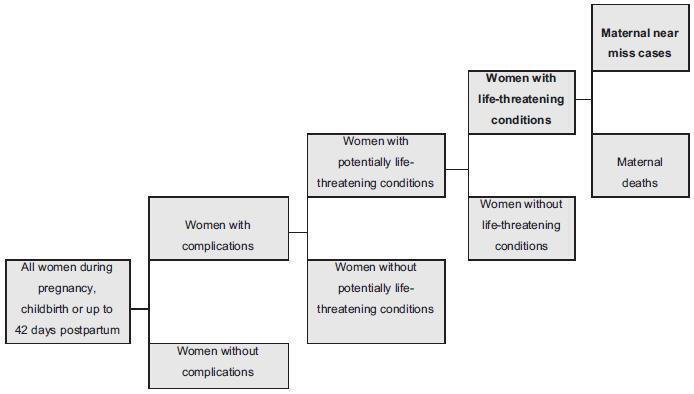Summary
Revista Brasileira de Ginecologia e Obstetrícia. 2018;40(9):554-562
Twin pregnancy accounts for 2 to 4% of total births, with a prevalence ranging from 0.9 to 2.4% in Brazil. It is associated with worse maternal and perinatal outcomes. Many conditions, such as severe maternal morbidity (SMM) (potentially life-threatening conditions and maternal near-miss) and neonatal near-miss (NNM) still have not been properly investigated in the literature. The difficulty in determining the conditions associated with twin pregnancy probably lies in its relatively low occurrence and the need for larger population studies. The use of the whole population and of databases from large multicenter studies, therefore, may provide unprecedented results. Since it is a rare condition, it ismore easily evaluated using vital statistics from birth e-registries. Therefore, we have performed a literature review to identify the characteristics of twin pregnancy in Brazil and worldwide. Twin pregnancy has consistently been associated with SMM, maternal near-miss (MNM) and perinatal morbidity, with still worse results for the second twin, possibly due to some characteristics of the delivery, including safety and availability of appropriate obstetric care to women at a high risk of perinatal complications.

Summary
Revista Brasileira de Ginecologia e Obstetrícia. 2005;27(2):75-79
DOI 10.1590/S0100-72032005000200006
PURPOSE: to evaluate perinatal outcomes in cases of oligohydramnios without premature rupture of membranes. METHODS: a total of 51 consecutive cases of oligohydramnios (amniotic fluid index, AFI < 5 cm) born between March 1998 and September 2001 were studied retrospectively. Data were compared to 61 cases with intermediate and normal volume of amniotic fluid AFI >5). Maternal and neonatal variables, as well as fetal mortality, early neonatal, and perinatal mortality rates were analyzed. For statistical analysis the c² test with Yates correction and Student's t test were used with level of signicance set at 5%. RESULTS: there were no significant differences between groups when the presence of gestational hypertensive syndromes, meconium-stained amniotic fluid, 1- and 5-minute Apgar score, need of neonatal intensive center unit, and preterm birth were analyzed. Oligohydramnios was associated with the way of delivery (p<0.0002; RR=0.3), fetal distress (p<0.0004; RR=2.2) and fetal malformations (p<0.01; RR=5.4). Fetal malformation rates were 17.6 and 3.3% in oligohydramnios and normal groups, respectively. Fetal mortality (2.0 vs 1.6%), early neonatal (5.9 vs 1.6%) and perinatal mortality (7.8 vs 3.3%) rates in both groups did not show statistical significance. CONCLUSION: Oligohydramnios was related to increased risk factor for cesarean section, fetal distress and fetal malformations.
Summary
Revista Brasileira de Ginecologia e Obstetrícia. 2004;26(10):781-786
DOI 10.1590/S0100-72032004001000005
PURPOSE: to assess the obstetric and perinatal outcomes in cases of term newborns in breech presentation, in patients with previous vaginal deliveries, comparing them to term newborns in vertex presentation. METHODS: 8,350 deliveries retrospectively from March 1998 to July 2003 were analysed. Of 419 deliveries (5.1%) in breech presentation, 58 cases were selected for the study (breech group), according to the following criteria: patients who had had one or more babies through vaginal delivery, gestational age ³37 weeks, no fetal malformation, no complications in the current pregnancy, birth weight between 2,500 and 3,750 g, and no previous cesarean section. The breech group was matched to 1,327 newborns in vertex position from pregnant women with no previous cesarean section (vertex group). Maternal age, parity, gestational age, delivery way, birth weight, meconium-stained amniotic fluid, 1- and 5-min Apgar score, need of neonatal intensive care unit, and small- and big-for-gestational age newborns were analyzed. Statistical analysis was performed by the c² test and by Student's t test, with the level of significance set at p<0.05. RESULTS: when breech and vertex groups were compared, they showed significant differences regarding the following variables: birth weight (3,091±538 g vs 3,250±497 g; p<0.01), vaginal delivery (63.8 vs 95.0%; p<0.0001), cesarean section (36.2 vs 5.0%; p<0,0001), and 1-min Apgar score (p<0.0001), respectively. CONCLUSIONS: we conclude that in term fetuses in breech position from pregnant women with previous vaginal deliveries, birth weight, delivery way, and 1-min Apgar score were different compared to fetuses in vertex position from women with the same characteristics.